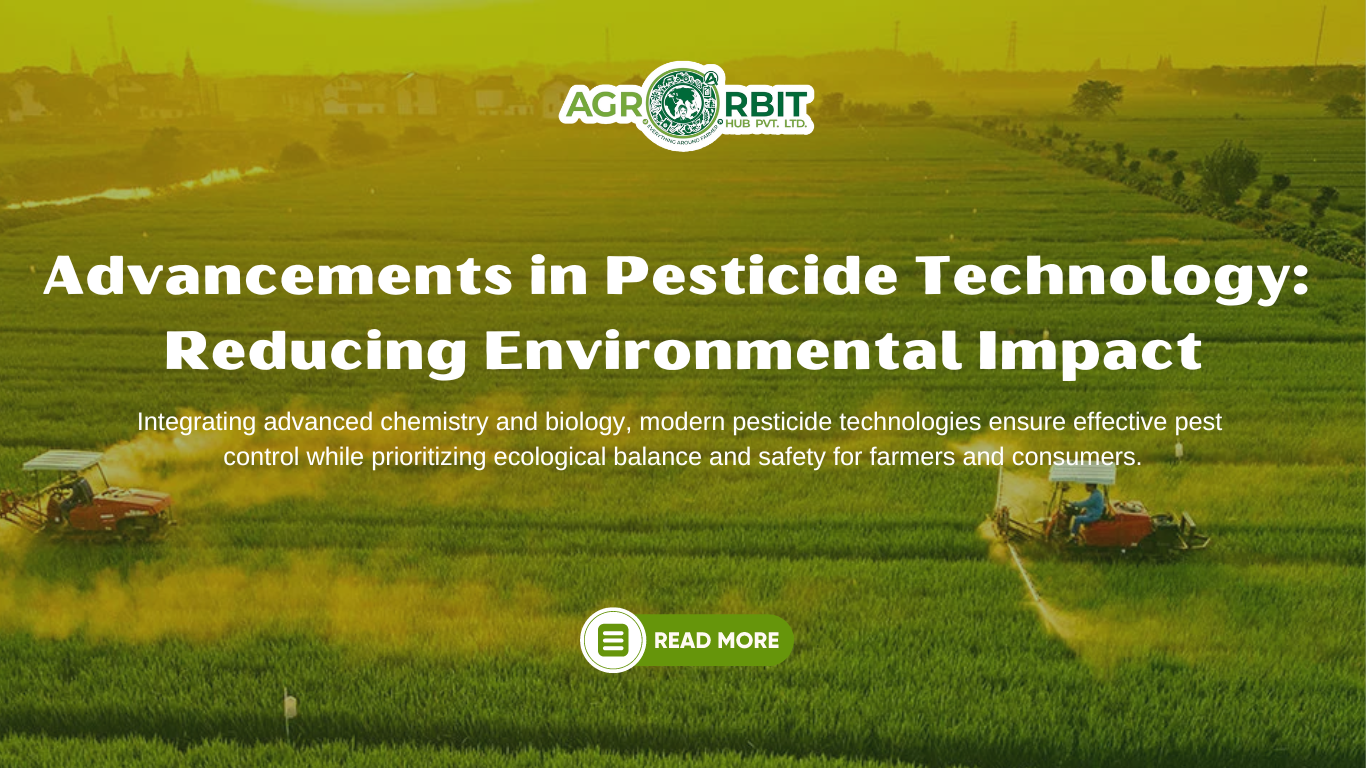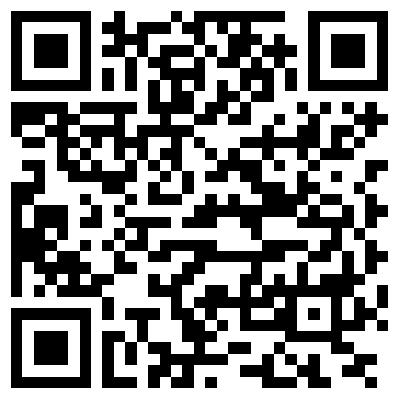

Advancements in Pesticide Technology: Reducing Environmental Impact
Agriculture is the backbone of human civilization, providing the food and resources necessary for survival and growth. However, traditional agricultural practices, particularly the use of pesticides, have often come at a significant environmental cost. Pesticides, while effective at controlling pests and increasing crop yields, can have detrimental effects on ecosystems, water quality, and nontarget species, including humans. In recent years, advancements in pesticide technology have aimed to mitigate these negative impacts, leading to more sustainable agricultural practices. This blog explores some of the key innovations in this field and their implications for the environment.
Green Solutions: Pioneering Pesticides for a
Healthier Planet
1. Biopesticides: Harnessing Nature's Power
The quest for sustainable agricultural practices has led to a significant shift towards biopesticides, which are derived from natural materials such as plants, bacteria, fungi, and minerals. Unlike traditional chemical pesticides, biopesticides offer a more environmentally friendly approach by targeting specific pests while minimizing the risks to beneficial insects, wildlife, and human health. This detailed examination explores the types, mechanisms, and advantages of biopesticides, with a focus on one of the most widely used examples: Bacillus thuringiensis (Bt).
Types of
Biopesticides
Biopesticides
can be broadly categorized into three main types:
- Microbial Pesticides: These consist of microorganisms (bacteria, fungi, viruses, or
protozoa) that target specific pests. When applied, they infect and kill
the pests through various mechanisms.
- Biochemical Pesticides: These include natural substances that control pests by nontoxic
mechanisms, such as pheromones, plant extracts, and certain essential oils
that disrupt mating patterns, repel pests, or inhibit their feeding.
- Plant Incorporated Protectants (PIPs): These are pesticidal substances produced by genetically modified
plants. The plants have been altered to express specific pesticidal
properties, such as the production of insecticidal proteins.
Mechanisms of Action
Biopesticides
work through several unique mechanisms, depending on their type and active
ingredients:
- Interfering with Pest Life Cycles: Some biopesticides disrupt the development stages of pests. For
instance, certain fungal biopesticides can infect insect larvae,
preventing them from maturing into adults.
- Attracting Natural Predators: Some biopesticides enhance the effectiveness of natural predators
or parasitoids. For example, the application of certain plant extracts can
attract predatory insects that feed on pests.
- Acting as Deterrents: Biopesticides can also act as repellents, deterring pests from
feeding on crops. Essential oils and plant-based compounds often serve
this purpose.
- Directly Killing Pests: Microbial biopesticides like Bt produce toxins that are lethal to
specific pests. When ingested by the pest, these toxins disrupt essential
biological functions, leading to the pest's death.
Bacillus thuringiensis (Bt): A Case Study
Bacillus thuringiensis (Bt) is a soil dwelling bacterium that has become one of the most successful biopesticides in modern agriculture. Bt produces crystalline proteins (Cry proteins) during sporulation, which are toxic to a narrow range of insect larvae, particularly those of the Lepidoptera (moths and butterflies), Diptera (flies and mosquitoes), and Coleoptera (beetles) orders.
Mode of Action
- Ingestion: Target insect larvae ingest the Bt spores and Cry proteins while
feeding on treated plants.
- Activation: The alkaline environment of the insect gut activates the Cry
proteins, converting them into active toxins.
- Binding and Pore Formation: The active toxins bind to specific receptors on the gut cells of
the insect, creating pores in the cell membranes.
- Cell Lysis and Death: The formation of pores disrupts the gut cells, causing cell lysis
and leading to the death of the insect.
Specificity and Safety
One of the
key advantages of Bt is its high specificity. The toxins produced by Bt are only
effective against certain insect pests and do not harm other organisms,
including beneficial insects such as bees and ladybugs, mammals, birds, or
humans. This specificity is due to the unique receptors required for the
toxin's action, which are only present in the target insect species.
Applications
and Benefits
Bt based
products are used in various forms, including sprays, dusts, and granules, to
control pests in crops such as corn, cotton, and vegetables. The benefits of
using Bt include:
- Resistance Management: Bt can be integrated into pest management programs to delay the
development of pest resistance to chemical pesticides.
- Environmental Sustainability: Bt's biodegradability ensures that it does not persist in the
environment, reducing the risk of long-term ecological impacts.
1. Genetically
Modified Crops: Built-in Pest Resistance
Genetically modified (GM)
crops represent a significant leap forward in agricultural technology,
providing a means to enhance crop yields, improve food security, and reduce the
environmental impact of farming. By incorporating genes from various organisms,
these crops are engineered to express traits that confer resistance to pests
and diseases. This innovation has led to substantial reductions in the need for
chemical pesticides, resulting in numerous environmental and economic benefits.
One of the most prominent examples of GM crops is Bt corn, which has
revolutionized pest management in maize cultivation. This detailed exploration
delves into the mechanisms, advantages, and broader implications of GM crops
with builtin pest resistance.
Mechanisms
of Built-in Pest Resistance
GM crops
achieve pest resistance through genetic engineering, a process that involves
the insertion of specific genes into the plant's genome. These genes typically
originate from bacteria, fungi, or other plants and confer traits that enhance
the plant's ability to withstand pest attacks.
- Gene Insertion: Scientists identify and isolate genes that produce proteins toxic
to certain pests. These genes are then inserted into the plant's genome
using techniques such as Agrobacterium mediated transformation or
biolistic particle delivery (gene gun).
- Protein Expression: The inserted gene is expressed in the plant cells, leading to the
production of Pest resistant proteins. In the case of Bt crops, the gene
from Bacillus thuringiensis (Bt) bacterium produces Cry proteins.
- Pest Targeting: When pests consume the GM plant, the toxic proteins disrupt
essential biological processes in the pests, leading to their death. For
instance, Bt corn produces Cry proteins that bind to receptors in the gut
cells of corn borers, creating pores that cause cell lysis and insect
death.
Case Study: Bacillus thuringiensis (Bt) Corn
Bt corn is
one of the most successful and widely adopted GM crops. It has been engineered
to produce Cry proteins from Bacillus thuringiensis, which are highly effective
against a variety of lepidopteran pests, including the European corn borer, a
major pest in corn production.
Benefits of Bt Corn
- Increased Yields: By protecting the crop from pest damage, Bt corn ensures higher
yields and better-quality produce. This is particularly important in
regions where pest infestations are prevalent.
- Environmental Protection: The reduction in pesticide use helps mitigate the adverse effects
on nontarget organisms, including beneficial insects, birds, and aquatic
life. It also reduces the risk of pesticide runoff into water bodies,
thereby protecting water quality and aquatic ecosystems.
- Soil Health: Fewer pesticide applications mean less soil disturbance, which
helps maintain soil structure and health. Additionally, the reduction in
mechanical interventions for pest control can decrease soil erosion.
Broader Implications
The
benefits of GM crops like Bt corn extend beyond immediate pest control. They
have broader implications for sustainable agriculture and environmental
conservation.
- Integrated Pest Management (IPM): GM crops can be a key component of IPM strategies, which combine
biological, cultural, and mechanical practices to manage pests in an
ecologically and economically sound manner. By reducing reliance on
chemical pesticides, GM crops help promote more holistic and sustainable
farming practices.
- Resistance Management: The use of GM crops requires careful management to prevent pests
from developing resistance. Strategies such as planting refuge areas with non-GM
crops help maintain a population of susceptible pests, thereby slowing the
evolution of resistance.
- Economic Benefits: GM crops can provide significant economic benefits to farmers, particularly
in developing countries. Higher yields and reduced input costs translate
to increased profitability and improved livelihoods for smallholder
farmers.
- Food Security: By improving crop resilience and productivity, GM crops
contribute to global food security. They enable farmers to produce more
food on the same amount of land, which is crucial in the face of growing
population pressures and climate change.
Environmental and Ethical Considerations
While GM
crops offer substantial benefits, they also raise important environmental and
ethical considerations. Ongoing research and dialogue are essential to address
these concerns and ensure the responsible deployment of GM technology.
- Biodiversity: The impact of GM crops on biodiversity, including the potential
for gene flow to wild relatives and the effects on nontarget organisms, is
an area of active research. Maintaining genetic diversity in crop
populations is important for ecosystem resilience.
- Regulatory Oversight: Rigorous regulatory frameworks are necessary to assess the safety
and environmental impact of GM crops. Transparent risk assessment and
management processes help build public trust and ensure that GM crops are
safe for human health and the environment.
- Ethical Issues: The use of genetic engineering in agriculture raises ethical
questions related to food sovereignty, patenting of living organisms, and
the control of agricultural biotechnology by a few large corporations.
Ensuring equitable access to GM technology and addressing these ethical
concerns are critical for its sustainable adoption.
3. Precision Agriculture: Smart Pesticide
Application
Precision
agriculture represents a paradigm shift in farming practices, leveraging
advanced technologies to enhance the efficiency, accuracy, and sustainability
of agricultural inputs, including pesticides. By integrating tools such as GPS,
drones, sensors, and data analytics, precision agriculture enables farmers to
apply pesticides more precisely, targeting specific areas of need rather than
treating entire fields uniformly. This targeted approach not only reduces
pesticide use and waste but also minimizes environmental contamination. This
detailed exploration delves into the various technologies involved in precision
agriculture and their applications in optimizing pesticide use.
Key
Technologies in Precision Agriculture
- Global Positioning System (GPS)
- Functionality: GPS technology provides accurate location data, enabling farmers
to map their fields with high precision. This information is crucial for
sitespecific management.
- Applications: GPS guided machinery can apply pesticides at variable rates
across different field zones, ensuring that only the necessary amount is
used in each area. This reduces overapplication and minimizes
environmental impact.
- Drones (Unmanned Aerial Vehicles UAVs)
- Functionality: Drones equipped with multispectral and thermal cameras can
capture detailed images of crops, providing insights into plant health,
pest activity, and stress conditions.
- Applications: Realtime aerial imagery from drones allows farmers to identify
pest hotspots quickly. Drones can also be used to apply pesticides
directly to affected areas, ensuring timely and precise interventions.
- Sensors
- Functionality: Various types of sensors, including soil moisture sensors,
nutrient sensors, and pest detection sensors, gather data on soil health,
plant conditions, and pest presence.
- Applications: Sensor data helps farmers understand the specific needs of their
crops and soil, guiding precise pesticide applications. For instance,
soil sensors can indicate areas with higher pest activity due to specific
soil conditions, prompting targeted treatments.
- Data Analytics and Machine Learning
- Functionality: Advanced data analytics and machine learning algorithms process
vast amounts of data collected from GPS, drones, and sensors. These
technologies can identify patterns and predict pest outbreaks.
- Applications: By analysing historical and Realtime data, predictive models can
forecast pest infestations, allowing farmers to apply pesticides
proactively and efficiently. This predictive capability enhances the
timing and accuracy of pesticide applications.
Benefits of
Precision Agriculture in Pesticide Management
- Targeted Pesticide Application
- Precision: By applying pesticides only where and when needed, precision
agriculture reduces the total volume of pesticides used. This targeted
approach ensures that pests are effectively controlled without over spraying
unaffected areas.
- Efficiency: GPS guided equipment and drone technology enable precise
delivery of pesticides, improving coverage and effectiveness. This
precision reduces the likelihood of pests developing resistance due to
sublethal exposure.
- Environmental Protection
- Reduced Contamination: Targeted applications minimize the runoff of pesticides into
nearby water bodies, protecting aquatic ecosystems and water quality. By
reducing blanket spraying, precision agriculture lessens the impact on
nontarget organisms, including beneficial insects and wildlife.
- Sustainable Practices: Precision agriculture supports sustainable farming practices by
optimizing input use. This leads to lower chemical footprints, preserving
soil health and biodiversity.
- Economic Efficiency
- Cost Savings: By reducing pesticide use, farmers can lower their input costs.
Precision agriculture also reduces labour and fuel costs associated with
traditional blanket spraying methods.
- Yield Improvement: Healthier crops and more effective pest control contribute to
higher yields and better-quality produce, enhancing farm profitability.
- Realtime Monitoring and Adaptation
- Dynamic Interventions: Drones and sensors provide Realtime data on crop health and pest
activity, enabling farmers to respond quickly to emerging issues. This
agility ensures that pest infestations are managed promptly, preventing
extensive crop damage.
- Adaptive Management: Continuous monitoring allows for adaptive management strategies.
Farmers can adjust pesticide applications based on current field
conditions and pest dynamics, improving overall pest management efficacy.
Case
Studies and Practical Examples
- Variable Rate Technology (VRT)
- Implementation: VRT involves using GPS and sensor data to apply pesticides at
variable rates across a field. This technology considers soil
variability, crop health, and pest density, ensuring that each area
receives the appropriate amount of pesticide..
- Drone Based Pesticide Application
- Implementation: Drones equipped with advanced imaging systems can identify areas
with pest infestations and apply pesticides directly to those areas. Some
drones can cover large areas quickly, making them ideal for largescale
farming operations.
- Integrated Pest Management (IPM)
- Implementation: Precision agriculture tools are integral to IPM programs, which
combine biological, cultural, mechanical, and chemical methods to manage
pests. Data from sensors and drones guide the integration of these
methods, optimizing pest control strategies.
4. Nano-Pesticides: Enhanced Efficiency and Reduced
Dosage
Nanotechnology has brought
transformative innovations to many sectors, and its application in agriculture
through nano pesticides is particularly promising. Nano-Pesticides, which
involve the encapsulation of active ingredients in nanoparticles, offer
significant improvements over conventional pesticides. These improvements
include better penetration and absorption by pests, enhanced efficacy,
controlled release mechanisms, and reduced environmental impact. This detailed
exploration delves into the mechanisms, benefits, and implications of nano
pesticides in modern agriculture.
Mechanisms
of Nano Pesticides
Nano pesticides utilize
nanoscale carriers to deliver active pesticide ingredients. These carriers can
be nanoparticles, nano capsules, nanospheres, and nano emulsions. The following
mechanisms highlight how nano pesticides improve upon traditional pesticide
formulations:
1. Improved Penetration and
Absorption
Small Size: The
nanoscale size of particles enables them to penetrate pest cuticles and plant
tissues more effectively than larger particles. This improved penetration
ensures that the active ingredients reach their target sites within pests more
efficiently.
Enhanced Interaction: The
increased surface area to volume ratio of nanoparticles enhances their
interaction with biological membranes, leading to better absorption and
bioavailability of the pesticide. This means that even small amounts of the
pesticide can have a significant impact.
2. Controlled Release
Mechanisms
Gradual Release: Nano pesticides can
be engineered to release their active ingredients gradually over time. This
controlled release ensures a consistent supply of the pesticide, providing long-lasting
protection against pests without the need for frequent reapplications.
Trigger Based Release: Some nano
pesticides are designed to release the active ingredient in response to
specific environmental triggers, such as changes in pH, temperature, or
moisture levels. This targeted release further enhances efficacy by ensuring
that the pesticide is only active when needed.
3. Targeted Delivery
Precision Targeting: Nanoparticles
can be functionalized with specific ligands or coatings that target particular
pest species or plant tissues. This targeting reduces off target effects and
enhances the concentration of the pesticide at the desired site of action,
increasing its effectiveness and minimizing collateral damage to nontarget
organisms.
Benefits of Nano
Pesticides
The adoption of Nano-Pesticides
offers several advantages over conventional pesticides, making them an
attractive option for sustainable agriculture:
1. Enhanced Efficacy
Higher Potency: The improved penetration
and absorption characteristics of Nano-Pesticides mean that lower doses are
required to achieve the same or better pest control compared to conventional
pesticides. This higher potency translates to more effective pest management.
Reduced Resistance: By ensuring consistent
and adequate delivery of the active ingredient, Nano-Pesticides help prevent
the development of pest resistance. Controlled and sustained release reduces
the chances of pests being exposed to sublethal doses that can lead to
resistance.
2. Environmental Protection
Lower Environmental Burden: The reduced
need for frequent applications and lower doses of Nano-Pesticides decreases the
overall chemical load on the environment. This results in less contamination of
soil and water bodies, preserving ecosystem health.
Minimized Nontarget Impact: The precision
targeting of Nano-Pesticides minimizes their impact on nontarget organisms,
including beneficial insects, birds, and aquatic life. This selective action
helps maintain biodiversity and ecological balance.
3. Economic Efficiency
Cost Savings: While the initial development
and production costs of Nano-Pesticides may be higher, the long-term benefits
include cost savings from reduced pesticide usage, fewer applications, and
lower pest resistance management costs.
Yield Improvement: Enhanced pest control
leads to healthier crops and higher yields, which contribute to increased
profitability for farmers.
4. Safety for Humans
Reduced Exposure: Lower doses and less
frequent applications of Nano-Pesticides reduce the risk of exposure for
farmworkers and consumers. The encapsulation of active ingredients also
decreases the volatility and drift of pesticides, enhancing safety.
Broader Implications and Future Prospects
The integration of
nanotechnology in agriculture through Nano-Pesticides has broader implications
for sustainable farming practices and environmental conservation:
1. Sustainable Agriculture
Resource Efficiency: Nano-Pesticides contribute to the efficient
use of resources by maximizing the effectiveness of pesticide applications.
This efficiency aligns with the principles of sustainable agriculture, promoting
practices that are economically viable, environmentally sound, and socially
responsible.
Reduced Chemical Footprint: The reduced
chemical load from using Nano-Pesticides helps mitigate the negative impacts of
conventional pesticide use, such as soil degradation, water pollution, and loss
of biodiversity.
2. Innovation and Research
Ongoing Development: Continued research and
innovation in nanotechnology and pesticide formulation are crucial for
advancing the efficacy and safety of Nano-Pesticides. This includes developing
new types of nanoparticles, optimizing delivery systems, and understanding long-term
environmental impacts.
Regulatory Frameworks: Establishing robust
regulatory frameworks is essential to ensure the safe and effective use of
Nano-Pesticides. These frameworks should address potential risks, environmental
impacts, and human health concerns associated with nanotechnology in
agriculture.
3. Global Food Security
Enhanced Productivity: By improving pest
control and crop health, Nano-Pesticides can contribute to increased
agricultural productivity. This enhancement is vital for meeting the growing
global food demand, particularly in regions facing challenges such as pest
infestations and climate change.
Sustainable Intensification: Nano-Pesticides support the concept of
sustainable intensification, which aims to increase food production from
existing agricultural land while minimizing environmental impact. This approach
is crucial for achieving food security without further depleting natural
resources.
4.
RNA Interference (RNAi): Targeted Gene Silencing
RNA interference (RNAi) represents a
revolutionary approach in the field of pest management, offering precise and
environmentally friendly solutions by silencing specific genes in pest species.
This technology leverages the natural cellular process of RNAi to inhibit the
expression of critical genes necessary for the survival and reproduction of
pests. By precisely targeting these essential genes, RNAi-based pesticides
promise high specificity and reduced risk of off-target effects, distinguishing
them from conventional chemical pesticides. Although still in its nascent
stages, RNAi technology holds immense potential for the future of sustainable
agriculture.
Mechanisms of RNAi in Pest Control
RNA
interference is a biological process in which RNA molecules inhibit gene
expression or translation, effectively silencing specific genes. The core
components of this process involve small RNA molecules, such as small
interfering RNAs (siRNAs) or microRNAs (miRNAs), which guide the degradation or
blocking of messenger RNA (mRNA) molecules. The RNAi pathway can be harnessed
for pest control through the following mechanisms:
- Gene Silencing
- siRNA Production: Double-stranded RNA (dsRNA) molecules corresponding to the
target gene are introduced into the pest. These dsRNA molecules are
processed by the enzyme Dicer into siRNAs.
- RNA-Induced Silencing
Complex (RISC): The siRNAs are
incorporated into the RISC, which uses the siRNA as a template to
recognize and bind to the complementary mRNA.
- mRNA Degradation: Once bound, the RISC complex degrades the target mRNA,
preventing it from being translated into protein. This silencing of gene
expression disrupts critical biological processes in the pest, leading to
its death or inability to reproduce.
- Specificity and Selectivity
- Targeting Essential Genes: RNAi-based pesticides are designed to target genes that are
essential for the pest’s survival, growth, or reproduction. These genes
are typically unique to the pest species, ensuring high specificity.
- Minimized Off-Target Effects: By focusing on unique genetic sequences found only in the target pest species, RNAi minimizes the risk of affecting non-target organisms, including beneficial insects, animals, and humans.
Benefits of
RNAi-Based Pest Control
The
adoption of RNAi technology in pest management offers several compelling
advantages:
- High Specificity
- Selective Targeting: RNAi pesticides can be tailored to silence genes specific to the
pest species, reducing the likelihood of harming beneficial insects and
other non-target organisms. This precision makes RNAi an ideal tool for
integrated pest management (IPM) programs.
- Reduced Environmental Impact
- Biodegradability: RNAi molecules are biodegradable and do not persist in the
environment, unlike many conventional chemical pesticides. This reduces
the risk of soil and water contamination.
- Decreased Chemical Use: The effectiveness of RNAi at lower doses means that less active
ingredient is required, leading to a reduced chemical footprint and lower
environmental burden.
- Enhanced Efficacy
- Targeting Resistance Genes: RNAi can be used to target and silence genes that confer
resistance to traditional pesticides, helping to manage and mitigate
resistance issues in pest populations.
- Sustainable Control: By disrupting critical biological processes, RNAi-based
pesticides provide long-lasting control over pest populations,
contributing to sustainable agricultural practices.
- Safety for Non-Target Species
- Human and Animal Health: RNAi targets specific genetic sequences in pests, posing minimal
risk to humans and animals. The specificity ensures that only the pest
species is affected, enhancing the safety profile of RNAi-based products.
Challenges
and Future Prospects
While RNAi
technology holds great promise, several challenges need to be addressed to
fully realize its potential in pest control:
- Delivery Methods
- Effective Delivery: Developing efficient delivery systems for RNAi molecules is
critical. Methods such as topical sprays, root absorption, or genetic
modification of plants to produce dsRNA are being explored.
- Stability and Uptake: Ensuring that RNAi molecules remain stable in the environment
and are effectively taken up by the pest is essential for their success.
- Cost and Scalability
- Production Costs: The cost of producing RNAi molecules needs to be reduced to make
RNAi-based pesticides economically viable for widespread use. Advances in
biotechnology and manufacturing processes are expected to address this
issue.
- Regulatory Approvals: RNAi-based products must undergo rigorous regulatory evaluations
to ensure their safety and efficacy. Clear regulatory pathways will
facilitate their adoption in agriculture.
- Resistance Management
- Potential for Resistance: As with any pest control method, there is a risk that pests
could develop resistance to RNAi. Implementing RNAi within an integrated
pest management framework and rotating different modes of action can help
mitigate this risk.
- Public Perception and Acceptance
- Education and Awareness: Public understanding and acceptance of RNAi technology are
crucial. Transparent communication about the benefits and safety of
RNAi-based pest control can help build trust and support for its use.
Conclusion
The advancements in pesticide technology are paving the way for more sustainable agricultural practices. By shifting from broad spectrum chemical pesticides to more targeted and efficient alternatives like biopesticides, GM crops, precision agriculture, Nano-Pesticides, and RNAi, we can significantly reduce the environmental impact of pest control. These innovations not only protect our ecosystems and biodiversity but also ensure the long-term viability of agriculture, securing food resources for future generations. Embracing these technologies is crucial for achieving a balance between agricultural productivity and environmental stewardship.
Note : This research is based on google we are not responsible for any other circumstances.







